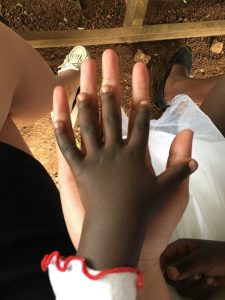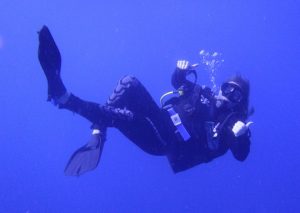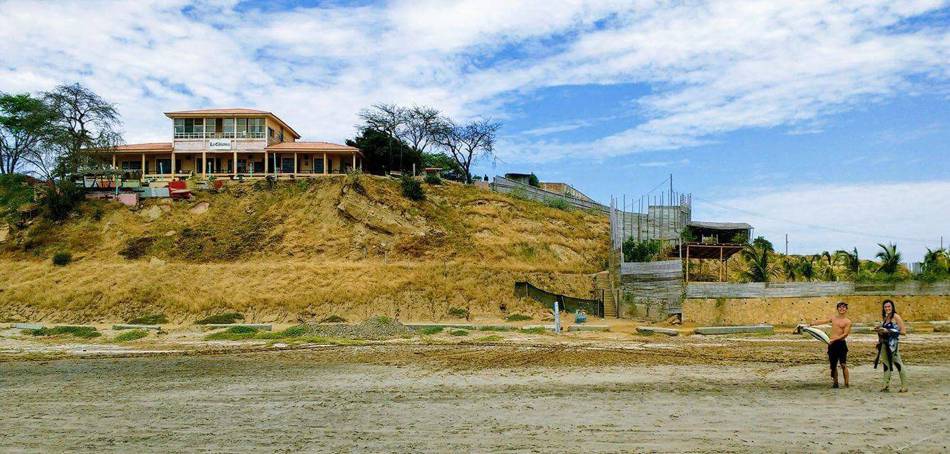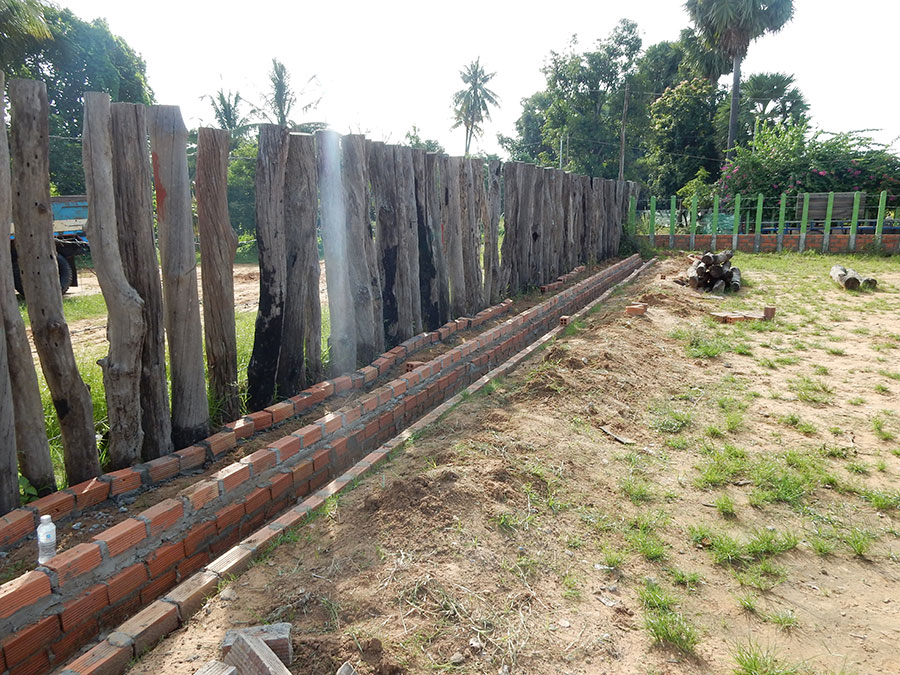“I was going to graduate and I was supposed to find a job like everyone else in my year,
but I didn’t do that at all. Maybe I looked up a job here and there, but I didn’t apply to any position. This was all because I stumbled up on an opportunity when I was browsing on the web on working abroad; I found Global Nomadic. The project that captured my eyes was called Science & Engineering Internship in Bangkok.
When I first saw the project, I immediately thought, “I don’t have any working engineering experience because I didn’t do an internship during my school year. I’ve never been to Thailand. I don’t want to start working locally right the way. So, let’s do it!” My aim on the project was to gain some hands-on engineering skills and experience a whole new culture.
After I applied, I was referred to the programme coordinator in Thailand. The organization dealt with finding an internship, setting up interviews, creating all the necessary documents for applying for VISA, and finding accommodations. Of course, the cost of these services is not the cheapest. Luckily, since I worked throughout my high school and university year, I didn’t have to raise any fund for this trip.
This trip had a fantastic beginning. On the first day of arrival, a staff member picked me up and showed me my apartment for the next three months. The apartment was bigger than what I thought and it was closed to a mall. The staff also set up the sim card for my phone. Later on, a co-worker came and picked me up to give me an orientation at the factory that I worked at. Since I arrived on a Thursday, I was going to start the week after so I had a long weekend already. To top that, I joined the trip with the staff and other interns in the city to Koh Samet, a nearby island. I made some friends and enjoyed my first weekend on a tropical island!
After an amazing weekend, I started living in my local area. Since the workplace was not within the city, I was living away from the tourist areas. This meant a lot of people did not know how to speak English, so street food and random restaurants were not really an option. The locals usually had a menu only in Thai with no pictures. On top of that, most locals would write down what they would order. Fortunately, as I said before, my apartment was by a big mall. The restaurants inside the mall had menus in English and with pictures. These restaurants were serving different cuisines so I enjoyed them a lot, especially because I am not good with spicy food, while most Thai food are spicy in general. The mall also contained supermarket, Tesco Lotus, which was convenient for house supplies. Other than that, there’s 7-11 everywhere, and they opened 24 hours, so living was not a struggle at all.
At the first week of work, my manager didn’t give anything major for me to start off. My main activity was to familiarize myself with the factory, its processes, and coworkers. I enjoyed this little easing in, instead of jumping into work right the way. The coworkers were extremely nice and kind. I also self-taught myself the software the company was using for the technical drawings. I believe this was a good foundation for that success I had for the rest of the project.”
Evan Kwok 2017




 deodorant, lotion, oil, sunscreen or any products because it can float on the surface of the water and get into the baby manatees eyes and sting them. Because of the solar power, we run out of water a few days a week, and then we use the saltwater from the lagoon to wash dishes, and take a bucket bath. My ideas what is clean and dirty have changed. If it is dry and doesn’t smell like poop or mildew, its clean! But most all of my clothes do smell like that, even after I “wash” them, cause nothing dry here, unless in direct sunlight.
deodorant, lotion, oil, sunscreen or any products because it can float on the surface of the water and get into the baby manatees eyes and sting them. Because of the solar power, we run out of water a few days a week, and then we use the saltwater from the lagoon to wash dishes, and take a bucket bath. My ideas what is clean and dirty have changed. If it is dry and doesn’t smell like poop or mildew, its clean! But most all of my clothes do smell like that, even after I “wash” them, cause nothing dry here, unless in direct sunlight. Callie is a 6 month old baby that arrived 2 weeks before I did. She has made great strides in a short amount of time. She was caught In a fishing net for a few days a least, because the mom always hangs around for a few days before giving up. She was covered in algae, which makes her pretty cute. She started off having to be nose tube fed, de wormed and then she moved to being hand tube feed and now, as of 4 days ago she is finally taking the bottle!! She is about to be moved from the intensive care pool to a recovery pool.
Callie is a 6 month old baby that arrived 2 weeks before I did. She has made great strides in a short amount of time. She was caught In a fishing net for a few days a least, because the mom always hangs around for a few days before giving up. She was covered in algae, which makes her pretty cute. She started off having to be nose tube fed, de wormed and then she moved to being hand tube feed and now, as of 4 days ago she is finally taking the bottle!! She is about to be moved from the intensive care pool to a recovery pool.











 community afforestation project brought green areas to the desert, which brought healthcare and clean water in times of environmental collapse, who installed tide tables to optimise the work of the fishermen and much more. In three short years EcoSwell has become a fully integrated and celebrated part of the community of Lobitos, Northern Peru, no small task for any organisation.
community afforestation project brought green areas to the desert, which brought healthcare and clean water in times of environmental collapse, who installed tide tables to optimise the work of the fishermen and much more. In three short years EcoSwell has become a fully integrated and celebrated part of the community of Lobitos, Northern Peru, no small task for any organisation. d an e-mail from Shadia from the organisation I had taught with in Lima and Arequipa, saying that she had recently been in touch with Michael, one of the founders of EcoSwell and that I might be interested. Coincidentally, Michael had studied at Newcastle like me and was giving a talk in our University that same week. I couldn’t make it, so I emailed him and we met on campus instead and over a café opposite the Students’ Union he told me all about EcoSwell. Hearing about how Michael, Andres, Diego and Alejandro, childhood friends from Lima with professional backgrounds in Environment and Social Sciences, Business and Engineering, left the City to form the organisation after visiting Lobitos for a surfing trip. They abandoned their lives in Lima and concentrated their efforts on creating an organisation which would bring positive and sustainable change to the community. This platform would allow them to accept, Michael told me, students and researchers from all backgrounds to realise their own projects here in Lobitos, or to contribute to existing projects as a general intern. Naturally, I was hooked, and that was before he’d even begun to describe the mysterious history and beauty of Lobitos. Its glamorous, oil-rich hay days, the military coup which collapsed the economy, its resurgence as a surf haven and the desert backdrop of the seemingly impossible Latin American dry forest. Keen to get involved in any way possible, I skype-met the whole team and we agreed that I could take charge of coordinating social media activities.
d an e-mail from Shadia from the organisation I had taught with in Lima and Arequipa, saying that she had recently been in touch with Michael, one of the founders of EcoSwell and that I might be interested. Coincidentally, Michael had studied at Newcastle like me and was giving a talk in our University that same week. I couldn’t make it, so I emailed him and we met on campus instead and over a café opposite the Students’ Union he told me all about EcoSwell. Hearing about how Michael, Andres, Diego and Alejandro, childhood friends from Lima with professional backgrounds in Environment and Social Sciences, Business and Engineering, left the City to form the organisation after visiting Lobitos for a surfing trip. They abandoned their lives in Lima and concentrated their efforts on creating an organisation which would bring positive and sustainable change to the community. This platform would allow them to accept, Michael told me, students and researchers from all backgrounds to realise their own projects here in Lobitos, or to contribute to existing projects as a general intern. Naturally, I was hooked, and that was before he’d even begun to describe the mysterious history and beauty of Lobitos. Its glamorous, oil-rich hay days, the military coup which collapsed the economy, its resurgence as a surf haven and the desert backdrop of the seemingly impossible Latin American dry forest. Keen to get involved in any way possible, I skype-met the whole team and we agreed that I could take charge of coordinating social media activities. From my second home in the University Library, I followed EcoSwell’s activities and shared them with the online community, keener to see it for myself with every post. For a month or two at a time, volunteers would move into the EcoHouse and begin their research alongside the local experts, Alejandro, Diego and Andres and as varied as their projects were, from dental campaigns to solar power, drip irrigation to algae-harvesting, they all had one thing in common: their time spent in Lobitos had changed their lives for the better. After visiting for myself in April 2017 and spending one month in the delightful company of my EcoFamily, I couldn’t agree more. Seeing sustainable change being realised in such a direct way, meeting the people who call Lobitos home and being part of such a wholly positive organisation is not only refreshing, but inspiring. What’s more, on a professional level, the practical experience gained whilst here, so hotly demanded by employers nowadays, is the real deal. I have learnt about bureaucratic and practical obstacles to development, increasing environmental and demographic threats and attempts to curb them and, above all, I have been reassured that in an era where macro-pessimism seems second nature, the good things outweigh all the bad.
From my second home in the University Library, I followed EcoSwell’s activities and shared them with the online community, keener to see it for myself with every post. For a month or two at a time, volunteers would move into the EcoHouse and begin their research alongside the local experts, Alejandro, Diego and Andres and as varied as their projects were, from dental campaigns to solar power, drip irrigation to algae-harvesting, they all had one thing in common: their time spent in Lobitos had changed their lives for the better. After visiting for myself in April 2017 and spending one month in the delightful company of my EcoFamily, I couldn’t agree more. Seeing sustainable change being realised in such a direct way, meeting the people who call Lobitos home and being part of such a wholly positive organisation is not only refreshing, but inspiring. What’s more, on a professional level, the practical experience gained whilst here, so hotly demanded by employers nowadays, is the real deal. I have learnt about bureaucratic and practical obstacles to development, increasing environmental and demographic threats and attempts to curb them and, above all, I have been reassured that in an era where macro-pessimism seems second nature, the good things outweigh all the bad.

 ench made from bricks to avoid any land slides into the trench. We also built a garden around the outside of the trench to add some colour and greenery to the school. I’ve attached some photos if you wish to see what we did. Some of us also finished constructing the toilet block by adding some stairs and plumbing. As I was only there for two weeks not too much was completed as the work is lengthy. I really would have liked to stay a little longer to ensure involvement in everything but unfortunately I couldn’t.
ench made from bricks to avoid any land slides into the trench. We also built a garden around the outside of the trench to add some colour and greenery to the school. I’ve attached some photos if you wish to see what we did. Some of us also finished constructing the toilet block by adding some stairs and plumbing. As I was only there for two weeks not too much was completed as the work is lengthy. I really would have liked to stay a little longer to ensure involvement in everything but unfortunately I couldn’t.